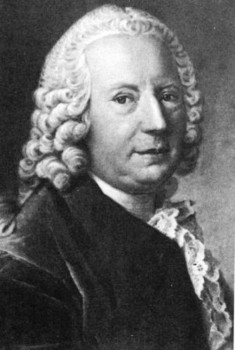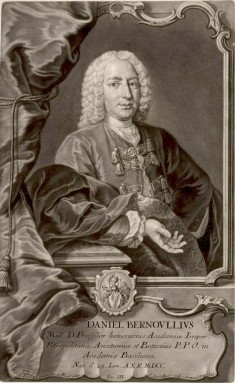Daniel Bernoulli was a famous Swiss mathematician and physicist. He was one amongst the many prominent mathematicians in the Bernoulli family. He is most remembered for his way of applying mathematics to mechanics, specifically fluid mechanics. He is also known for his pioneering work in statistics and probability.
Early Years
Daniel Bernoulli was born on February 8, 1700 in Groningen, Netherlands. He came from a family of prominent mathematicians. His father was actually one of the first developers of calculus while his uncle and older brother were also great mathematicians.
At a young age of seven, Daniel Bernoulli showed a great desire to study mathematics. However, his father encouraged him to study business. This was because his father was afraid of the poor rewards that awaited Daniel as a mathematician. Daniel refused but later gave in to his dad’s wishes and studied business.
Later, his father asked him to study medicine. Daniel agreed to do so on the condition that his dad taught him mathematics privately. Daniel studied medicine in Basel and in 1721, he earned his Ph.D. in botany and anatomy. Daniel did not have a good relationship with his father because his father was embarrassed when he and Daniel tied for first place at a scientific contest at the University of Paris. Despite, trying very hard to reconcile with his father, his father kept a grudge until the time that he passed away.
Career Highlights
In 1724, Daniel left for St. Petersburg. He went there to fill a post as professor of mathematics. However, he was very unhappy and an illness in 1733 gave him a reason to leave. He went back to the University of Basel where he became the chair of metaphysics, natural philosophy, and medicine.
He remained here until his death. Daniel was elected a Fellow of Royal Society in the year 1750.
Contributions to Mathematics
In 1724, Exercitationes was published. This was his first mathematical work. In 1738, Hydrodynamique was published. This was one of his most notable works. After a while, he wrote a memoir that explained the theory of tides. This work received a prize from the French Academy. The memoirs contain all that was done on tide between the publication of the investigations of Pierre-Simon Laplace and Isaac Newton’s book called Philosphiae Naturalis Principia Mathematica.
He also wrote several papers containing mechanical questions about vibration of strings and the works of Brook Taylor. Daniel Bernoulli also made discoveries on the motion of fluids. He made a significant discovery on the connection between speed of the flow of blood and pressure. He performed an experiment in which he set up an apparatus that showed the relation between the two values.
Experiments and Findings
 He punctured the wall of a pipe with the help of an open ended straw. He noted that the height that the fluid rose up the straw related to the fluid’s pressure. With time, this became the normal way of measuring blood pressure; this was done by piercing the artery with some pointed glass tubes. This method was used for about 170 years, until 1896 when an Italian doctor discovered a much less painful method to measure blood pressure.
He punctured the wall of a pipe with the help of an open ended straw. He noted that the height that the fluid rose up the straw related to the fluid’s pressure. With time, this became the normal way of measuring blood pressure; this was done by piercing the artery with some pointed glass tubes. This method was used for about 170 years, until 1896 when an Italian doctor discovered a much less painful method to measure blood pressure.
Daniel’s method was also used to measure the airspeed of a plane. In 1766, he solved a statistical problem. He did this by analyzing the smallpox disease and its mortality rate to demonstrate the efficiency of the vaccination. Daniel also did a lot of research on beams and elasticity. His Bernoulli Principle is currently quite useful in the field of aerodynamics.
Work with Statistics
Daniel wrote a book in 1738 which was entitled Exposition of a New Theory on the Measurement of Risk. In this work, he discusses the idea that St. Petersburg paradox was the actual base of the economic theory of risk premium, risk aversion, and utility. One of his earliest attempts to seriously analyze statistical problems involving censored data was his 1766 analysis of the effectiveness of the smallpox vaccine.
Death and Legacy
Daniel Bernoulli was greatly honored for his great contributions to physics and mathematics. He was even elected to be a member of several leading scientific societies in St. Petersburg, Paris, Berlin, London, Bologna, Mannheim, Bern Zurich and Turin. However, he lost his interest in the field due to his strife with his dad. On March 17, 1782, he died at the age of 82.
